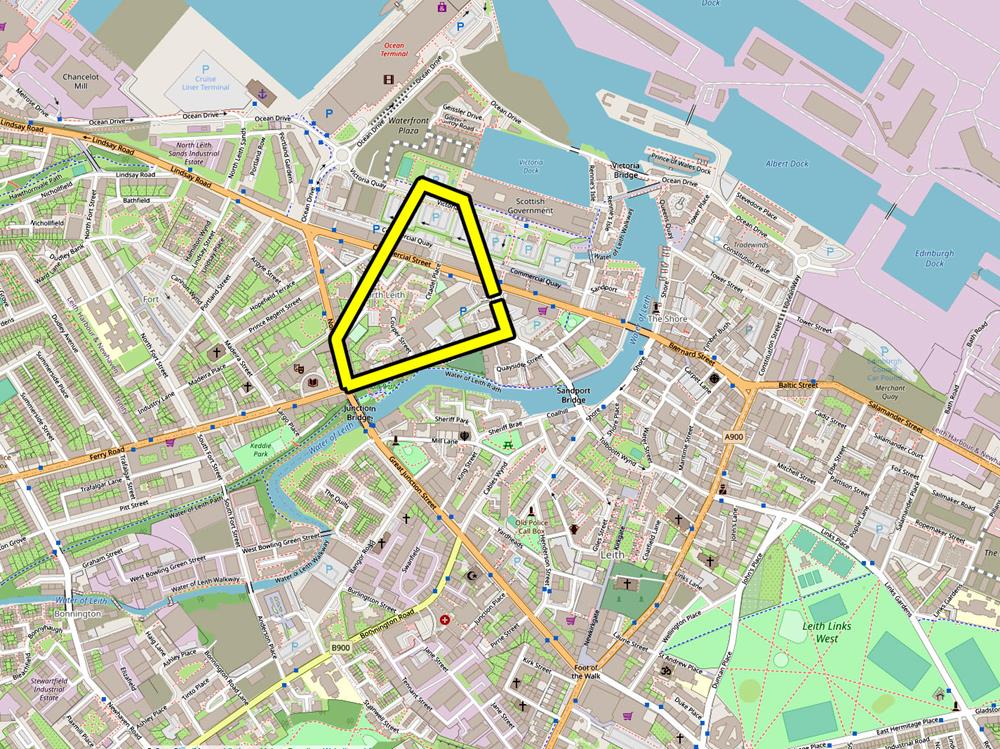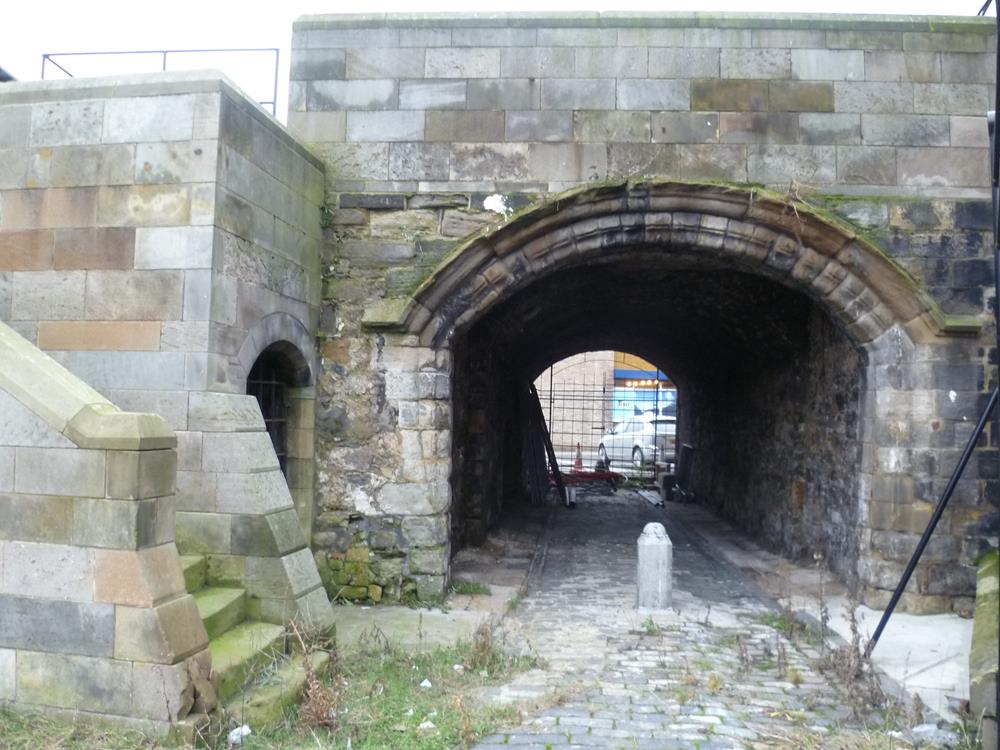14 – Cromwell invades Scotland 1650 – 1690
| < 13 – Dynastic convolutions and convulsions 1553 to 1650 | Δ Index | 15 – Jacobite Rebellions 1689 – 1745 > |
In 1650, Oliver Cromwell’s Parliamentarian Army invaded Scotland in opposition to Scottish support of King Charles II. Supplies were shipped from his base in Newcastle by sea to Dunbar, and then to Leith.
Many castles and fortified houses were attacked and destroyed.
Guns at the Bass Rock Castle bombarded Cromwell’s supply ships, before the castle was starved into submission. Dirleton and Tantallon Castles were both destroyed; Preston Tower and Blackness Castle were damaged.
Cromwell’s forces gradually seized control of everything south of the Forth. They built a Fortified Citadel in the town of Leith as their headquarters.
 Location of Leith Citadel
Location of Leith Citadel
 The last remains, this archway was a portal to Leith Citadel
The last remains, this archway was a portal to Leith Citadel
The Scots dug in near Stirling, and controlled everything north of the Forth. Months of stalemate ended with the Battle of Inverkeithing when a sea-borne invasion force overcame the gun batteries on Inchgarvie and at North Queensferry to land an invasion force in Fife and outflank the Scots.
Charles headed south to escape. Cromwell split his forces. Half seized control of all of Scotland causing more damage. Inchgarvie Castle and Ravenscraig Castle were damaged while Rosyth Castle and Rossend Castle were occupied.
The remainder pursued Charles to his eventual defeat at Worcester. Charles escaped, and was restored to the throne in 1660, following Cromwell’s death in 1658.
But matters were still not settled.
In 1685, when Charles’s son James II & VII took the throne, his staunch Roman Catholicism alarmed the English parliament. In 1688, they invited William of Orange James’s Protestant son-in-law, to invade England and claim the crown.
| < 13 – Dynastic convolutions and convulsions 1553 to 1650 | Δ Index | 15 – Jacobite Rebellions 1689 – 1745 > |
top of page
